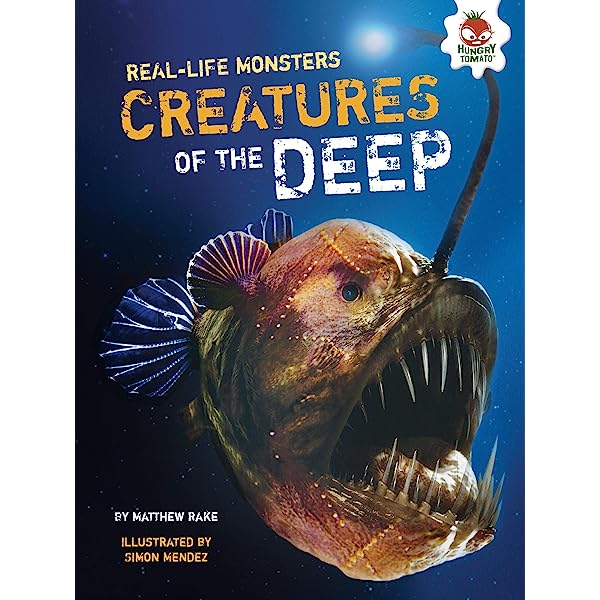Velvet Worms of the Abyss: Spineless Marvels of the Deep Sea
The enigmatic depths of the ocean conceal a multitude of wonders, and among these marvels are the mysterious velvet worms. While often associated with terrestrial environments, these spineless creatures also inhabit the abyssal realms of the deep sea, where they navigate the darkness with grace and intrigue. In this exploration, we delve into the fascinating world of abyssal velvet worms, uncovering their unique characteristics, adaptations, and the role they play in the intricate web of deep-sea ecosystems.
Unveiling the Abyssal Realm: A Velvet Playground
The deep sea, with its crushing pressure and perpetual darkness, is a realm that continues to captivate scientists and enthusiasts alike. Within this abyssal expanse, velvet worms carve out their existence in a realm where few others dare to venture. These creatures, belonging to the phylum Onychophora, showcase an extraordinary ability to adapt to extreme conditions.
Adaptations for the Abyss: Illuminating the Darkness
One of the most remarkable features of abyssal velvet worms is their ability to thrive in environments with minimal light. Unlike their terrestrial counterparts, these deep-sea dwellers have evolved unique adaptations to navigate in near-complete darkness. Their bodies often exhibit bioluminescent patterns, allowing them to communicate and navigate in the absence of sunlight. The glow-in-the-dark patterns are not only a means of communication but also serve as a form of camouflage, helping them blend into the bioluminescent backdrop of the deep sea.
In addition to their luminescence, abyssal velvet worms boast specialized sensory organs that enable them to detect subtle vibrations and changes in water pressure. These adaptations are crucial for locating prey and potential mates in the vast expanse of the deep sea, where visibility is severely limited.
Feeding Habits: Ambush Predators in the Abyss
The feeding habits of abyssal velvet worms are as intriguing as their luminous adaptations. In the pitch-black environment of the deep sea, these creatures have evolved into efficient ambush predators. With their elongated bodies and sharp, retractable jaws, they lie in wait for unsuspecting prey. As a potential meal approaches, the velvet worm strikes with precision, injecting a mix of enzymes that immobilize and begin the digestion process. This method of ambush predation has proven to be highly successful in the resource-scarce abyssal environment.
Ecosystem Engineers: Unraveling the Deep-Sea Web
Beyond their role as predators, abyssal velvet worms play a crucial role in shaping deep-sea ecosystems. Their activities as burrowers contribute to the oxygenation of the sediments, promoting the survival of various microorganisms. Additionally, the nutrients released during the decomposition of organic matter within their burrows create microhabitats that support a diversity of life in the otherwise inhospitable abyssal plains.
As ecosystem engineers, velvet worms are integral to the delicate balance of the deep-sea food web. Their interactions with other organisms, including bacteria and small invertebrates, create a complex web of dependencies that scientists are only beginning to understand.
Conservation Challenges: Safeguarding the Abyssal Ecosystems
Despite their importance in deep-sea ecosystems, abyssal velvet worms face threats from human activities such as deep-sea mining and bottom trawling. The delicate balance of the abyssal ecosystem is easily disrupted, and the consequences of such disturbances are not fully understood. Conservation efforts must focus on understanding the biology of these enigmatic creatures and implementing measures to mitigate the impact of anthropogenic activities on their fragile habitats.
FAQs: Unraveling Common Mysteries
Q1: How deep in the abyss do velvet worms reside?
A1: Abyssal velvet worms are found in depths ranging from 2,000 to 6,000 meters, thriving in the complete darkness of the deep-sea environment.
Q2: Are abyssal velvet worms endangered?
A2: While their specific conservation status is not well-documented, abyssal velvet worms face threats from human activities, and conservation efforts are crucial to safeguard their unique ecosystems.
Q3: Do abyssal velvet worms have any natural predators?
A3: The specific predators of abyssal velvet worms are not extensively studied, but their adaptations, including bioluminescence and ambush predation, likely serve as defenses against potential threats.
In conclusion, the velvet worms of the abyss are not only captivating due to their mesmerizing bioluminescence but also for their role as ecosystem engineers in the deep-sea environment. As we continue to unveil the mysteries of the abyssal realms, it becomes clear that these spineless marvels are key players in the intricate tapestry of life hidden beneath the ocean’s surface.

